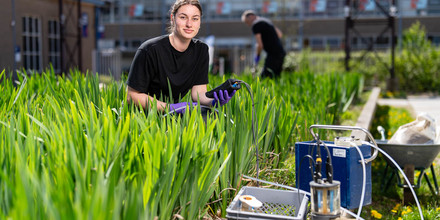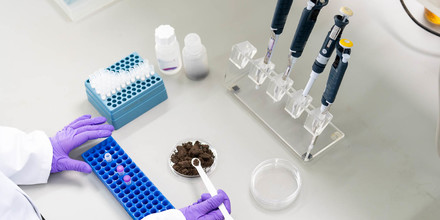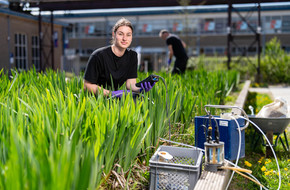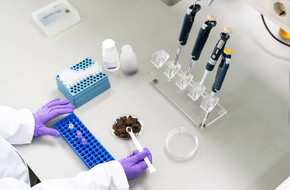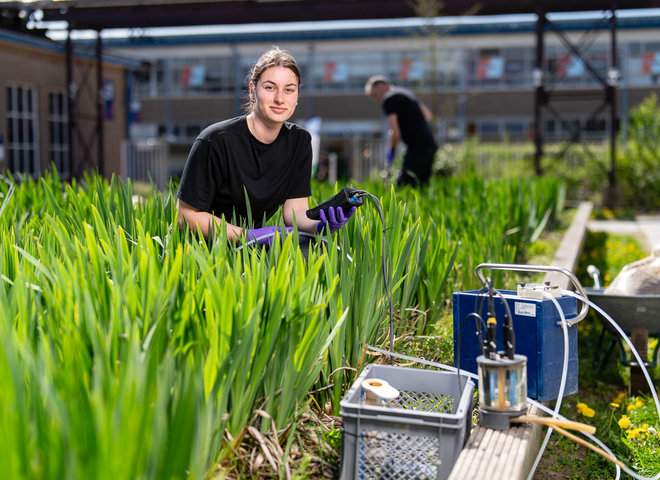DNA Analysis (qPCR and NGS) and Data Interpretation
We employ specialized DNA techniques to analyze and map microbiomes, offering deep insights into both soil and digester plant communities.
What is qPCR?
quantitative polymerase chain reaction (qPCR)
qPCR technology allows us to recognise the unique ‘fingerprints’ of micro-organisms in complex samples. Just as our fingerprints are unique, each micro-organism has specific DNA sequences. Using qPCR analysis, we precisely quantify specific microorganisms - such as biomass-degrading bacteria, nitrogen fixers, or pathogens, among others - creating a detailed map of your sample's microbial community
Advantages qPCR over traditional culture methods:
- Accurate detection of specific organisms based on genes (target).
- Clear quantitative results (exact numbers).
- Fast test results.
- Also detect non-culturable microorganisms. The majority of microorganisms present (about 99%) on Earth are non-culturable.
- We can analyse multiple targets simultaneously.
Primers and Primer Design
To perform a successful qPCR assay, high-quality primers are essential. We have an extensive collection of standard primers related to soil health and biodigestion (biomass degraders).
Standard primers are not available for all target micro-organisms. At Bioclear earth, we are capable to develop specific primers that accurately detect the desired DNA. This allows us to identify and analyse specific targets tailored to your needs. For example, to detect pathogens or the presence of microorganisms required for degradation of certain compounds.
What is NGS?
NGS (Next-Generation Sequencing)Through NGS, we offer in-depth insights into the microbial composition of your samples. This does not involve a specific species as in qPCR, but the total composition, the network of microorganisms (Microbiome) found in soil, water or sludge, biomass material. This allows us to provide insight into the biodiversity and biological processes taking place and answer specific questions: such as does my soil contain nitrogen fixers and plant growth-promoting bacteria.


